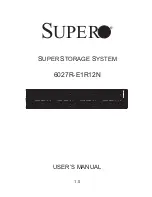
Vega 30 Router User Manual
System Application Example
Routing Use Cases 10.8
Issue1 Revision 1
Page 193
© 2017 SAM
The numbers and letters in circles in Figure 140 relate back to node points in Figure 138 on
page 190.
Figure 140 shows an example of how a Vega 30 Router may be used in our system
application use case.
Description:
For video signals in the system:
•
Video sources (1)
re-enter the router (2) to allow any audio operations on inputs
to be done.
•
There are signals to/from a studio (3) and a video processing unit (4).
•
Four signals (5) pass to a quad-split multiviewer unit for video monitoring.
•
Eight signals (6) go to a vision mixer; two signals return, PST (7) and PGM (9).
•
PST and PST copy output signals are produced (8).
•
PGM signal from the mixer (9) re-enters the router (10) to allow audio operations to be
done.
•
A final PGM output and a PGM copy (11) are produced.
•
Two alternate PGM outputs (12) and then re-enter the router to allow de-embedding
of audio for monitoring purposes. The final alternate PGM outputs (13) are available.
For audio in the system:
•
Audio sources (1)
are routed to an audio mixer (2).
•
Mixed audio (3) is available to be embedded into video outputs or routed to MADI
output audio channels.
•
All program audio is available on a MADI output (4).
•
A feed to/from a studio is present (5) and (6).
•
A 64-channel MADI output (7) is available for monitoring purposes.
•
De-embedding and embedding - (a)
, (d), (c), (d), (e) and (g) - is done within the
router on router outputs.
•
Any audio routing and shuffling - (b) and (f) - is done in the audio crosspoint.
















































